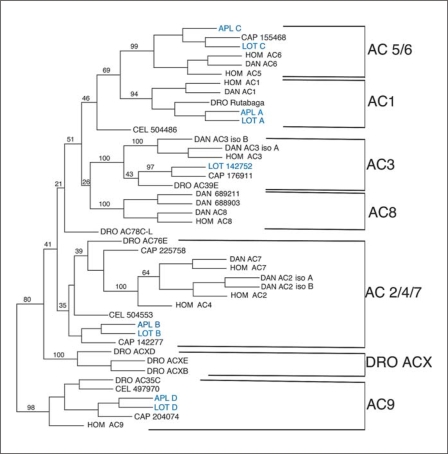Fig. 4.
Results of a Phylip analysis of the C2A domains of AC from different species. For the vertebrates, human (Hom) and Danio (DAN), the accepted name of the AC is given. For C. elegans (CEL), the gene numbers from the NCBI genome site are used and for Drosophila (DRO), the accepted gene names are used, for Capitella (CAP) the protein IDs are given from the JGI genome site. For the mollusks the names are blue. For Aplysia (APL) the name from Lin et al. [in preparation] is used. For Lottia (LOT), the same designations are used as for Aplysia when the ACs correspond to the Aplysia ACs; for the fifth AC from Lottia, the protein ID from the JGI genome site is used. Further explanation of the protein IDs is included in the legend for figure 3. The numbers represent the percentage of trees generated by the Phylip protein Neighbour that contained the tree shown. Only selected branches are highlighted to emphasize the division into AC families. Dictyostelium ACA (not shown) served as the outgroup for this analysis.

